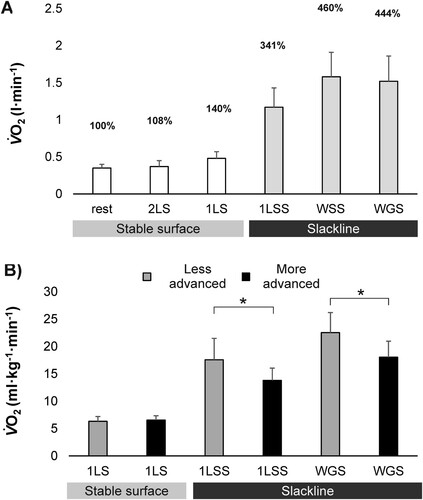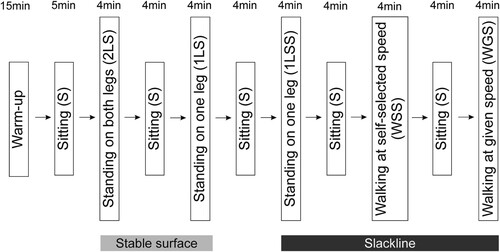Figures & data
Figure 2. (A) Oxygen uptake (V̇O2) during seated rest, parallel two leg stance on a stable surface (2LS), one-leg stance on a stable surface with 20s right and left foot alternation (1LS), one-leg stance on slackline with 20 s right and left foot alternation (1LSS), walking at self-selected speed on slackline (WSS); walking at given speed (15 m·min−1) on slackline (WGS). Percentages represent V̇O2 increases with respect to seated rest. (B) V̇O2 in less and more advanced climbers during balancing on stable surface and slackline. * represents large effect of slackline ability (Cohen’s d > 0.8).

Table 1. Oxygen uptake (V̇O2), pulmonary ventilation (V̇E), tidal volume (VT), breathing frequency (BF) and heart rate (HR) during balancing tasks in less and more advanced slackliners. Bold format represents large effect of slackline ability (Cohen’s d > 0.8).
Table 2. Oxygen uptake (V̇O2), pulmonary ventilation (V̇E), tidal volume (VT), breathing frequency (BF) and heart rate (HR) during walking on slackline in less and more advanced slackliners. Bold format represents large effect of slackline ability (Cohen’s d > 0.8).

